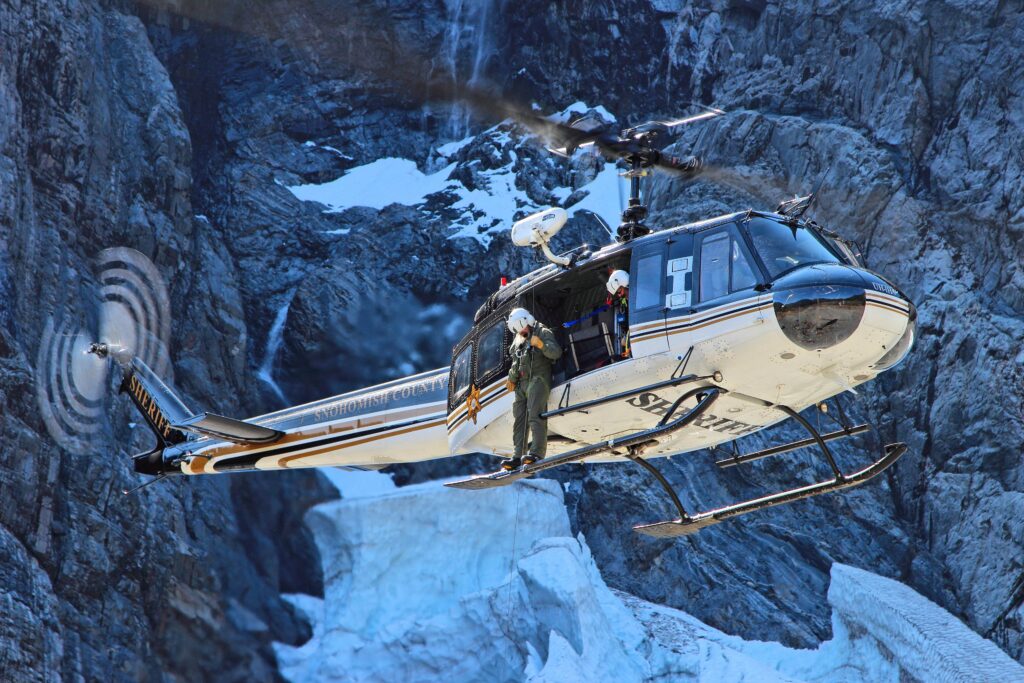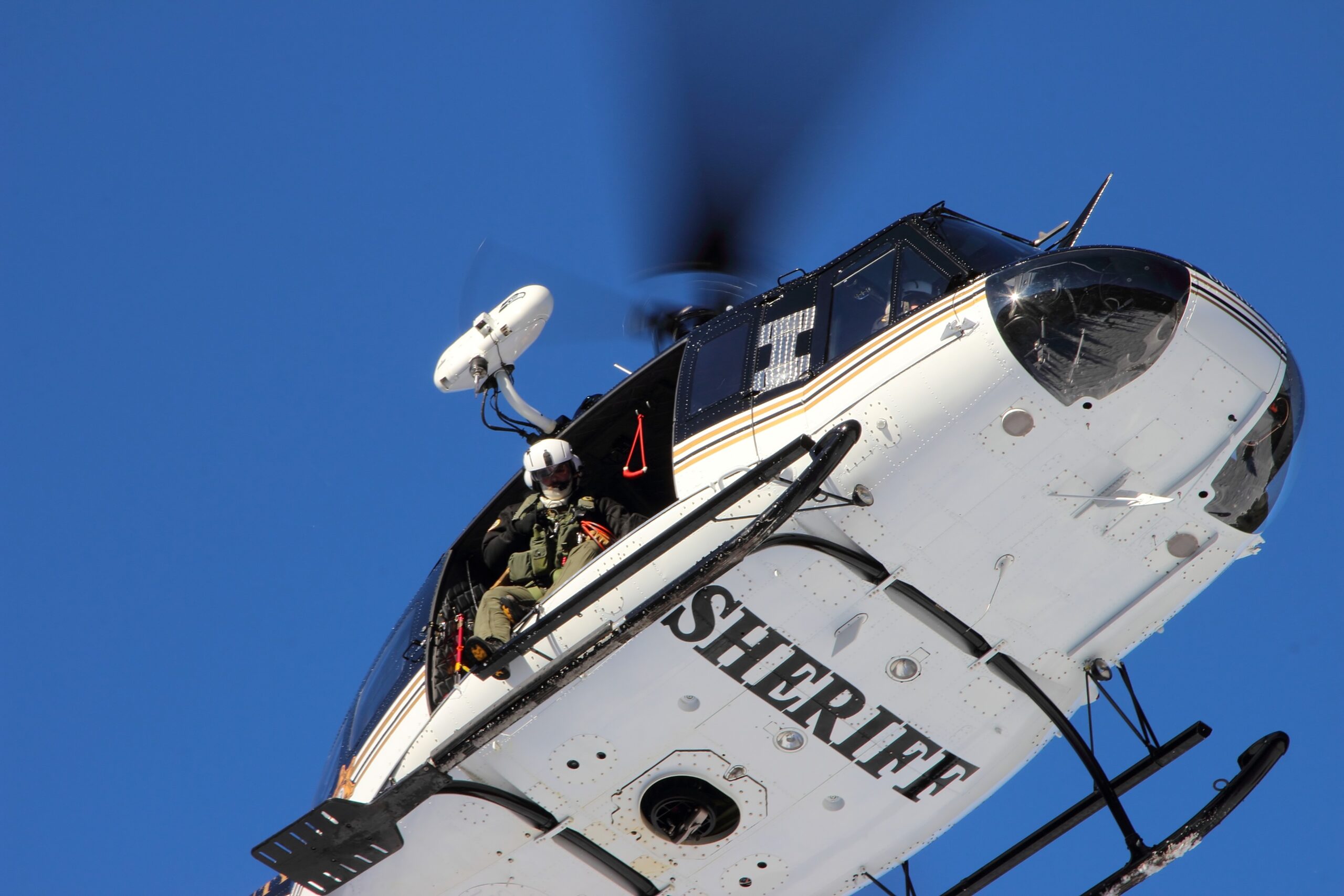OUR MISSION
We respond to emergency situations when the nature of the injury or terrain requires extraction by air.
We bring life-saving equipment, rescue personnel and paramedics directly to our patients to help reduce disability and improve their chances for survival.

WHAT WE DO
We serve our community
Search
In the wilderness, our helicopters are essential to finding lost hikers, hunters, and campers. Using thermal imaging (FLIR), we can search for missing children and Alzheimers patients in urban environments.
Rescue
We can evacuate stranded swimmers, climbers, or snowmobilers from inaccessible terrain by rescue hoist or by utilizing the short haul method.
Transport
For mass casualty incidents (aircraft accidents, landslides, or a bridge collapse), we can rapidly deliver patients to definitive care using a 3 litter system or AirTEP device.
Fire Fighting
For fires that threaten life or structures, we rely on two 250-gallon “FAST” buckets for fire suppression.
Command & Control
In addition to relaying radio transmissions to the Department of Emergency Management, we are equipped with a Video Downlink System that can be used to send live video straight to the command centers.
We are proud of our
accomplishments
80+
Missions per year
3
Helicopters on standby
13
Washington counties served
FAQs
What is HRT?
The Helicopter Rescue Team (HRT) is part of Snohomish County Volunteer Search and Rescue (SCVSAR). SCVSAR is a 501(c)(3) non-profit organization that serves as a volunteer rescue resource for the Snohomish County Sheriff’s Office. SCVSAR is registered as a public charity with the Washington Secretary of State and our tax ID number is 91-0848877.
How many missions do you fly in a year?
We fly on more than 80 missions per year.
When is HRT on duty?
We’re on duty 24 hours a day, 7 days a week, 365 days a year.
How many people are in HRT?
There are currently 31 members of HRT: 26 are volunteers and 5 are deputies. Our team includes pilots, crew chiefs, rescue technicians, flight medics and ground support personnel.
Where do you conduct rescue missions?
HRT conducts search and rescue missions in Snohomish, King, Pierce, Chelan, Kittitas, Skagit, Whatcom, Okanogan, Yakima, Lewis, Mason, Kitsap, and Jefferson counties. We are a regional asset and support other SAR organizations in Washington.
Where does HRT get its funding?
HRT is comprised mostly of Volunteers including Volunteer Rescue Technicians, Flight Medics, Pilots, Crewchiefs and Ground Support Personnel. All rescue equipment and volunteer Personal Protective Equipment (helmets, vests, harnesses, etc.) are fully funded through donations. The Snohomish County Sheriff’s Office funds aircraft fuel and maintenance. Sky Valley Fire District provides all medical supplies for the Flight Medics.
How will HRT use the funds raised?
100% of any donations earmarked for “HRT” will go towards helicopter rescue equipment such as litters, rescue vests, avalanche bags, crampons, ice axes, and personal protective equipment for the volunteer members.
If I’m rescued by HRT, will I be charged?
No, neither Snohomish County Volunteer Search or the Helicopter Rescue Team charge for rescues – though donations are gratefully accepted!
How much does it cost per hour to operate SnoHawk 10?
It costs approximately $1200 per flight hour to operate SnoHawk 10. This includes maintenance, fuel, parts, personnel, and aircraft insurance.
We’re holding a charity event and we’d like HRT to be the recipient. How can we do this?
We really appreciate you thinking about us. Please contact us at [email protected] for more information.

SnoHawk 10
SnoHawk 10 is a heavily modified Bell UH-1H designed for high altitude rescue work in the Cascade Mountains. A more powerful turbine engine provides 1800 shaft horsepower. Upgraded tail rotor system and tailboom provide additional tail rotor authority at high-density altitudes.
Crew of five includes two pilots, one Crewchief/hoist operator, one Rescue Technician/EMT, and one Flight Medic/Paramedic. Advanced Life Saving capability brought to every rescue mission. Night Vision Goggle equipped for night rescues.
External rescue hoist capable of lifting 600 pounds. Equipped with 250 feet of steel cable. Short haul and sling load capability. Airborne Tactical Extraction Platform used for high rise building rescues, personnel, and equipment external transport.

